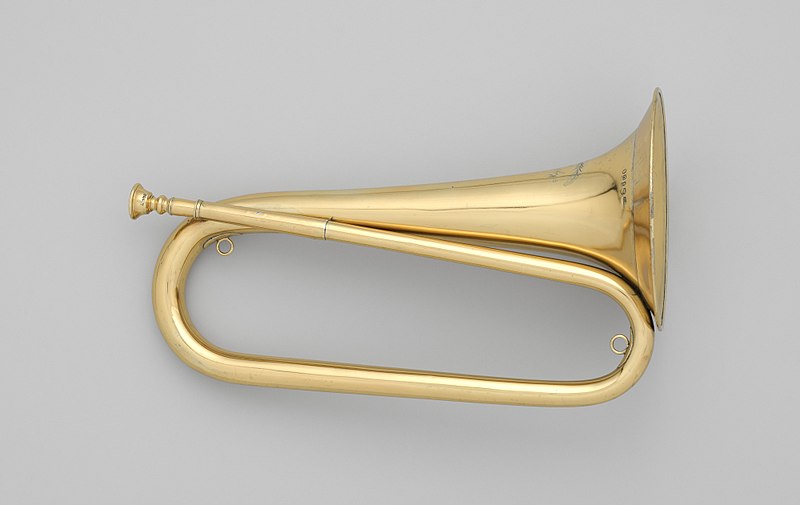Do you know a Clarion Trumpet is one of the oldest instruments in the world? were you informed that when Tutankhamun’s tomb’s burial chamber in Egypt was discovered in 1922, a pair of trumpets were discovered inside? I’m glad I told you. It’s also believed by Christians that the clarion trumpet will be used by Angels to announce the judgment day.
The Clarion trumpet has one of the most distinctive and recognized sounds of all the instruments used today, from fantasies to film soundtracks. However, in the countless years that it has been in use, it has undergone several changes and advancements and has a lengthy history.
History Of A Clarion Trumpet
Around 1500 BC is when the first metal trumpets are thought to have been produced. King Tut’s tomb in Egypt was found to contain silver and bronze trumpets, and other prehistoric trumpets have also been discovered in South America, China, and Asia.
There is also solid reason to conclude that civilizations have been blowing into items to generate noises for considerably longer than that, considering how most inventions develop from previous forms. For instance, animal horns and shells were used by cultures to create music by blowing into them.
A trumpet-shaped valve mechanism was initially attempted to be made by Charles Clagget in 1788, but Heinrich Stoelzel and Friedrich Bluhmel devised the first useful valve mechanism—the box tubular valve—in 1818.
In the 14th and 15th centuries, the trumpet developed its folded form. It was known as a natural trumpet at the time and generated “harmonic” tones. The Tromba da tirarsi, a musical instrument having a slide on the mouth tube to produce a chromatic scale, began to appear during this period.
In the sixteenth century, the trumpet served both ceremonial and military roles. During this time, the art of producing trumpets also gained popularity in Germany. The trumpet was first used in musical compositions before this period came to an end. Musicians initially employed the clarion trumpet’s low index before moving on to the higher harmonic series tones.
In the 17th and 18th centuries, when the trumpet was at its peak, prominent composers like Leopold Mozart and Michael Haydn incorporated it into their compositions. During this era, the trumpet was played either in the key of D or C for courtly occasions or in the key of Eb or F for military occasions. This era’s musicians played specifically in several registers. Notably, the trumpet’s valves were added in 1814 to allow it to play the chromatic scale consistently.
Mechanism Of A Clarion Trumpet
For the Clarion trumpet, a tube, typically made of brass, is twisted into a spiral shape that is about 180 cm long, has several valves or pistons, and finishes in a wide mouth known as a bell or pavilion is employed.
Contrary to the cornet and flugelhorn, which have conical tubes and generate a gentler tone, the first two-thirds of the tube are almost cylindrical, giving it a loud and bright sound.
Except for the final 30 cm, where the tube widens to create the mouth in the shape of a bell, the other continuing third is a circular tube. A complicated series of turns make up the gauge, which is biggest shortly before the bell starts and tiniest at the mouthpiece receiver.
The clarion trumpet’s intonation depends heavily on the thoughtful design of these turns. Generally, the sound produced by brass instruments is created by blowing air through closed lips to create a “buzz” in the mouthpiece, which causes a wave of vibration to begin that lasts forever in the air column inside the mouthpiece. trumpet.
The trumpeter can choose to perform from a variety of harmonic nuances or by adjusting the mouthpiece’s aperture and lip tension popularly known as the embouchure
The trumpet consists of three pistons that project the sound through various sections of the pipe that makes up the instrument. This allows the trumpet to achieve its chromatic tuning by either lengthening or shortening the sound’s path.
Any of these pistons lengthens the tubes as they are hit, bringing the note’s tone down. Three pistons are used to lower the trumpet’s note: the first, which is attached to a medium-length tube, lower it by two semitones; the second, which is connected to a thick tube, reduces it by one semitone; and the third, which is connected to a long tube, lower it by three semitones. There may occasionally be a fourth piston, similar to the piccolo trumpet, which lowers the trumpet note
where the trumpet note is diminished by five semitones. Combining these three (or four) pistons allows for the creation of up to eight distinct lengths in the resonator tube, which allows for nearly complete chromatic tuning. The bell emits a sound that is directed outward.
Maintenance Of A Clarion Trumpet
The only maintenance the valves need, aside from the occasional thorough cleaning, is routine lubrication. Some brand-new trumpets may need to be broken in for the valves, but this usually involves daily oiling and heavy use of the valves. This calls for lots of practice.
You do not need to remove the valves from your Trumpet in order to oil them if it is not dirty, which it shouldn’t be. You may just incorporate it by beginning at the bottom.
Many Trumpet players regularly adjust the valve caps’ tightness and looseness to make sure they won’t seize up. The bottom and top caps should both be detachable, but they shouldn’t be loose. If your trumpet vibrates strangely, it might be to blame







